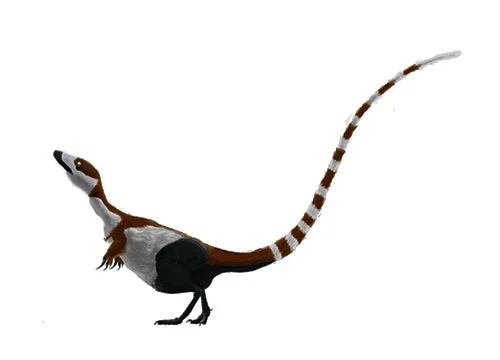Sinosauropteryx (Chines lizard wing)

Sigh-no-sore-op-eh-ryx
Ji, Q. & Ji, S. - 1996
Carnivore
Estimated 1 meters long
Small Theropod
S. prima (type)
China, Liaoning Province - Yixian Formation
Early Cretaceous, 130 million years ago
Sinosauropteryx Facts
Sinosauropteryx is a small theropod dinosaur that lived in what is now China during the Early Cretaceous period, about 130 million years ago. It is notable for being one of the first dinosaurs discovered with preserved evidence of feathers, which has greatly enhanced our understanding of the evolution of feathers, flight, and bird origins.
Sinosauropteryx was a relatively small dinosaur, measuring about 1 meter (3.3 feet) in length and weighing around 1 kilogram (2.2 pounds). It had a long, slender tail, a long neck, and a small head with sharp teeth. Its most distinctive feature, however, was its feathers. Sinosauropteryx had a coat of simple, filament-like feathers covering its entire body, including its head, neck, and tail.
The discovery of Sinosauropteryx and its feathers has challenged the traditional view that feathers evolved exclusively for flight. Instead, it is now widely accepted that feathers initially evolved for insulation and display, and that their role in flight came later.
In addition to its feathers, Sinosauropteryx is also known for its coloration. The preserved fossils show that it had a reddish-brown and white striped tail, which is the first known example of pigment-based coloration in a dinosaur. This discovery has helped to further our understanding of the evolution of color in dinosaurs and has sparked interest in the possible role of coloration in dinosaur behavior and communication.
Overall, Sinosauropteryx is an important dinosaur for our understanding of the evolution of feathers and the early origins of birds. Its small size, feathered body, and striped tail make it a fascinating and important part of the diversity of life during the Early Cretaceous period in China.



